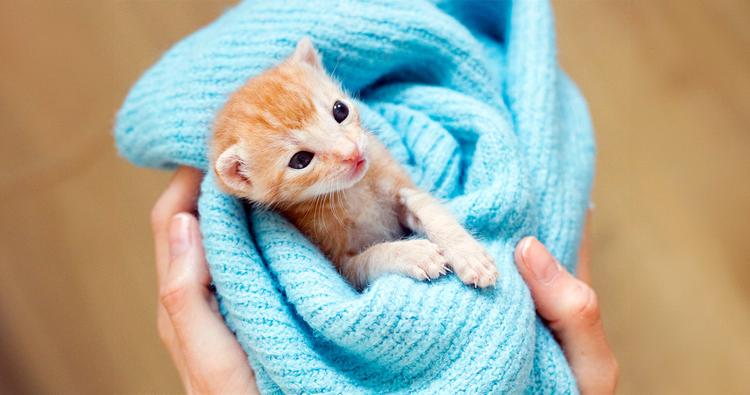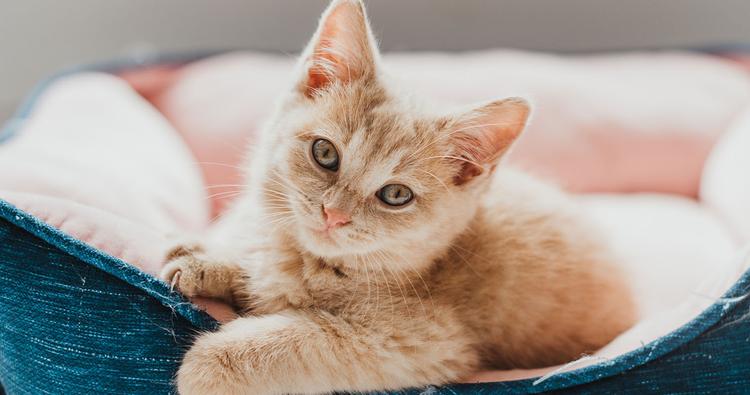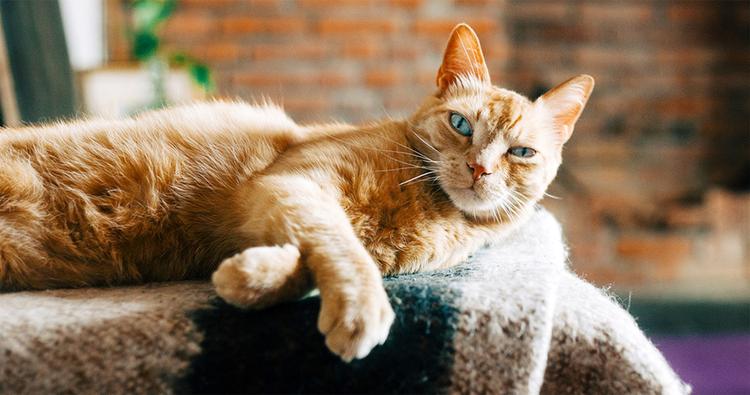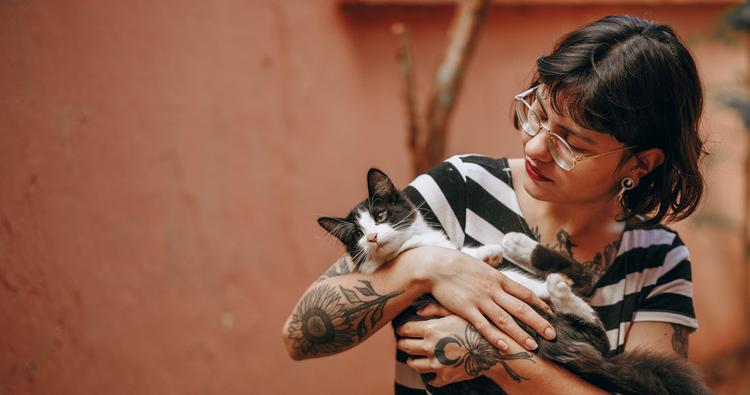How to Bottle Feed Your Foster Kittens Like a Pro
Learn how to bottle-feed newborn kitten fosters with these expert tips.
Learn how to bottle-feed newborn kitten fosters with these expert tips.
by Katie Koschalk, | July 30, 2024

Casey Elise Christopher / Shutterstock
Fostering very young kittens who have been orphaned or abandoned comes with a lot of responsibility. These tiny animals rely entirely on you for their survival as well as their well-being. One major component of caring for any young kitten is bottle feeding, a delicate and essential process that requires patience, dedication, and the right know-how. This can be intimidating, especially given how small and fragile these kitties seem.
In this guide, we’ll cover all the specifics you need to know about bottle-feeding foster kittens, from assessing the kitten before you feed them to what to feed them to perfecting your feeding technique.
Bottle-feeding a kitten might seem intimidating at first, but with the right guidance, you can become a pro. The goal is to re-create the “mother cat” nursing experience for them, says Samantha Bell, a cat expert at Best Friends Animal Society. Here’s a step-by-step to help you through that process.
You’ll need a kitten nursing bottle specifically designed for feeding kittens, which can be found online or at a pet supply store. Be sure to cut a small hole in the bottle’s nipple if it doesn’t already have one. The hole should be just large enough for the formula to drip out slowly when the bottle is held upside down. If it’s too big, the kittens will consume too much formula too fast, increasing the risk of aspiration — the accidental breathing in of food or fluid into the lungs, which can lead to pneumonia. If the hole is too small, they’ll have to work harder to eat, and won’t eat as much as they should.
For a better, more reliable option, purchase a specialized nipple, such as the Miracle Nipple, to attach to the bottle. These nipples are designed to release a proper flow of formula.
Before feeding, always ensure the kitten is warm enough. Since a kitten can’t regulate their body temperature, it’s your responsibility to keep them at a comfortable, healthy temperature. Never attempt to feed a cold kitten, as they cannot properly digest food when their body temperature is too low.
Signs a kitten is cold include:
Feet pads, ears, and nose that feel cold to the touch
Shivering
Hunching down
Seeking warmer places, like under covers or on your lap
If you’re not sure if they’re warm enough, take a rectal-temperature reading by placing a thermometer (that’s lubed with Vaseline) gently in the kitten’s rectum. The normal body temperature of a kitten ranges from 100 to 102 degrees Fahrenheit. If the kitten is too cold, place them on a pet-approved heating pad (such as a K&H or SnuggleSafe pet bed warmer) that’s wrapped in two or three layers of towels.
Kittens (and cats) cannot be fed cow’s milk, other types of dairy milk, dairy alternatives, or human baby formula. Not only do these kinds of milk not have the necessary nutrients kittens need, but they could cause extreme (and possibly fatal) GI upset, warns Bell.
Instead, you’ll need to purchase formula milk for kittens — specifically a kitten milk replacer (KMR) powdered formula. These formulas, which can be found online or at pet stores, contain the essential nutrients, vitamins, and minerals that newborn kittens need for proper growth and development.
To prepare the liquid formula, mix one-part powdered formula with two-parts warm water. Bell suggests using distilled or filtered water to prevent tummy troubles, as the chemicals in tap water can be too rough on young kittens. The liquid milk mixture should be warm but not hot — about 100 to 102 degrees Fahrenheit. Fill the bottle with the liquid mixture and attach the nipple.
If you need to reheat formula that’s been in the fridge, place the bottle in a bowl filled with hot water for a few minutes.
Put the kitten on a small blanket in a belly-down position. You can also swaddle them and hold them in an upright position if that’s easier for you. Never feed a kitten on their back, though, as this can cause aspiration.
Bell suggests letting them smell the formula, bottle, and nipple before every feeding. “Scent is babies’ primary sense, and they will refuse to drink if anything smells bad/old/stale to them — they can smell much better than us,” says Bell.
You should also test the temperature of the formula before each feeding by shaking a few drops onto your inner wrist to be sure it’s not too hot. (It should feel warm, but not hot). Lastly, don’t forget to wash your hands before each feeding.
To start feeding, hold the kitten’s head steady with your non-dominant hand and gently slide the nipple into the kitten’s mouth. Invert the bottle to start the flow of formula, holding it at a 45-degree angle.
Be careful not to squeeze the formula into the kitten’s mouth, as this can cause aspiration. If you’re feeding a very young kitten and finding it difficult to control the flow, consider using a syringe with a Miracle Nipple instead of a bottle.
Just like human infants, kittens require burping after meals. Gently place the kitten on their stomach, either on your shoulder or in your lap, and softly pat their back until you hear a small burp.
If formula gets on the kitten’s face, it can lead to crusty fur or moist dermatitis, which may cause fur loss and irritation. To prevent this, gently wipe the kitten’s face with a damp cloth after each feeding to remove any formula residue.
Bell says you can save extra formula in the fridge for up to 24 hours, but ideally less than 12 hours. Before feeding, check for chunks clogging the nipple opening and clean them out if needed. Once a bottle is empty, thoroughly clean it (and the nipple) before filling it again.
“Mama cats lick the kitten’s genital area to stimulate them to pee and poop,” explains Bell. “So, we want to use a paper towel or an unscented baby wipe to accomplish the same.” To do this, gently rub the kitten’s genitals with the towel in a circular motion. You can expect the kitten to poop once every day or two (not every time you stimulate them).
So, how often should you bottle-feed a kitten? And how much do you feed per session? Refer to the kitten feeding chart, below.
AGE | WEIGHT | AMOUNT / FEEDING | SCHEDULE |
|---|---|---|---|
0 to 1 week | 50 to 150 grams | 2 to 6 ml | Every 2 hours |
1 to 2 weeks | 150 to 250 grams | 6 to 10 ml | Every 2 to 3 hours |
2 to 3 weeks | 250 to 350 grams | 10 to 14 ml | Every 3 to 4 hours |
3 to 4 weeks | 350 to 450 grams | 14 to 18 ml | Every 4 to 5 hours |
4 to 5 weeks | 450 to 550 grams | 18 to 22 ml | Every 5 to 6 hours |
5 to 8 weeks | 550 to 850 grams | Weaning + wet food | Every 6 hours |
Now that you know the basic feeding process, let’s review some essential tips for providing the best care possible when it comes to feeding.
What do you do if your foster kitten isn’t eating when offered a bottle? Bell shares a few things you can try.
Stimulate their sucking reflex by gently rubbing the nipple against their lips.
Try different liquid temperatures ranging from 98 to 102 degrees Fahrenheit.
Try different nipple shapes (round vs. cone-shaped).
Stroke their back and forehead as a mother cat would with their tongue.
Consider nursing time — kittens under two weeks like to nurse when sleepy, while kittens older than two weeks need to be fully awake and alert.
Let the kittens out of their confined area to walk (or wobble) around, as this burns calories and makes them want to eat more.
If you’re caring for siblings, keep the siblings close together while feeding, as this mimics the natural way they would feed alongside each other.
Keep the room relatively dim or cover/shade their eyes, as bright lights can be jarring.
Use a kitchen or postal scale to weigh the kittens before and after each feeding. Kittens should gain approximately half an ounce daily, or three to four ounces weekly. By eight weeks old, most kittens weigh around two pounds. Keep a record of their weights and adjust their food intake as they grow. If the kittens are not gaining weight or are losing weight, contact a veterinarian immediately.
If you’re caring for multiple kittens, Bell suggests always feeding the most urgent kitten first, such as the smallest or the sickly one. Weaker kittens often can’t wait as long for food, so this prioritization helps increase their chances of survival.
For their safety, it’s essential to keep bottle-fed kittens in a cat carrier when you’re not directly caring for them. Put a pet-approved heating pad wrapped in two or three layers of towels in the carrier to keep the kittens warm. Never place a kitten directly on a heating pad without towels, as this could burn them.
Make sure the carrier is spacious enough to allow the kittens to move away from the heating pad if they become too warm. Kittens usually need a heating pad until they are about three to five weeks old, after which they can regulate body temperature on their own.
Allow the kittens to eat at their own pace. Forcing them to eat too quickly can lead to aspiration, digestive issues, and stress.
The best formula to feed your kitten is a commercial kitten milk replacer (KMR) designed to mimic the nutrients found in a mother cat’s milk. The brands PetAg and Breeders’ Edge are widely recommended.
“Newborn kittens receive all the hydration they require from the formula you give them,” says Bell. “You should not offer water to kittens until they’re fully weaned and confidently eating solid food.” When it’s time to offer water, Bell stresses the importance of offering it in a shallow bowl for their safety.
Most kittens are ready to slowly begin eating wet kitten food around five weeks old. However, some may need a bit more time on the bottle due to health issues or differences in weight or size.
Most kittens start weaning off formula when they’re five weeks old. By seven to eight weeks of age, most kittens will be fully weaned.
Fostering a kitten is a meaningful way to make a difference in an animal’s life, increase their chance of adoption, and reduce shelter overpopulation. This is a challenge exacerbated during kitten season in the warmer months.

Katie Koschalk is a freelance writer based in Northern California. Fusing her love and knowledge of animals with her journalism degree and years of professional writing, Katie is dedicated to improving the lives of pets and their caretakers by sharing helpful and accurate information. When she’s not at her desk, you can find her exploring trails with her Aussie, Hunter, cooking plant-based meals, and talking to her two cats, Jax and Sadie, in really ridiculous voices.

Foster & Volunteer

Foster & Volunteer

Adoption Advice

Adoption Advice
Thinking of adopting a cat? Learn more about the risks of single kitten syndrome before choosing an adopted friend.

Behavior & Training
If you’re considering getting your cat a feline buddy, you’re in the right place.

Foster & Volunteer
Ready to make a difference in a kitty’s life?

Foster & Volunteer
Fostering is a great way to dip your toes into the pet-parenting waters, while helping a pet in need.

Foster & Volunteer
Thinking about fostering a cat? Here are 6 things you should consider before making the decision.

Adoption Advice
By creating a safe space, respecting your cat’s boundaries, and using positive reinforcement, a shy cat can absolutely thrive in your home.